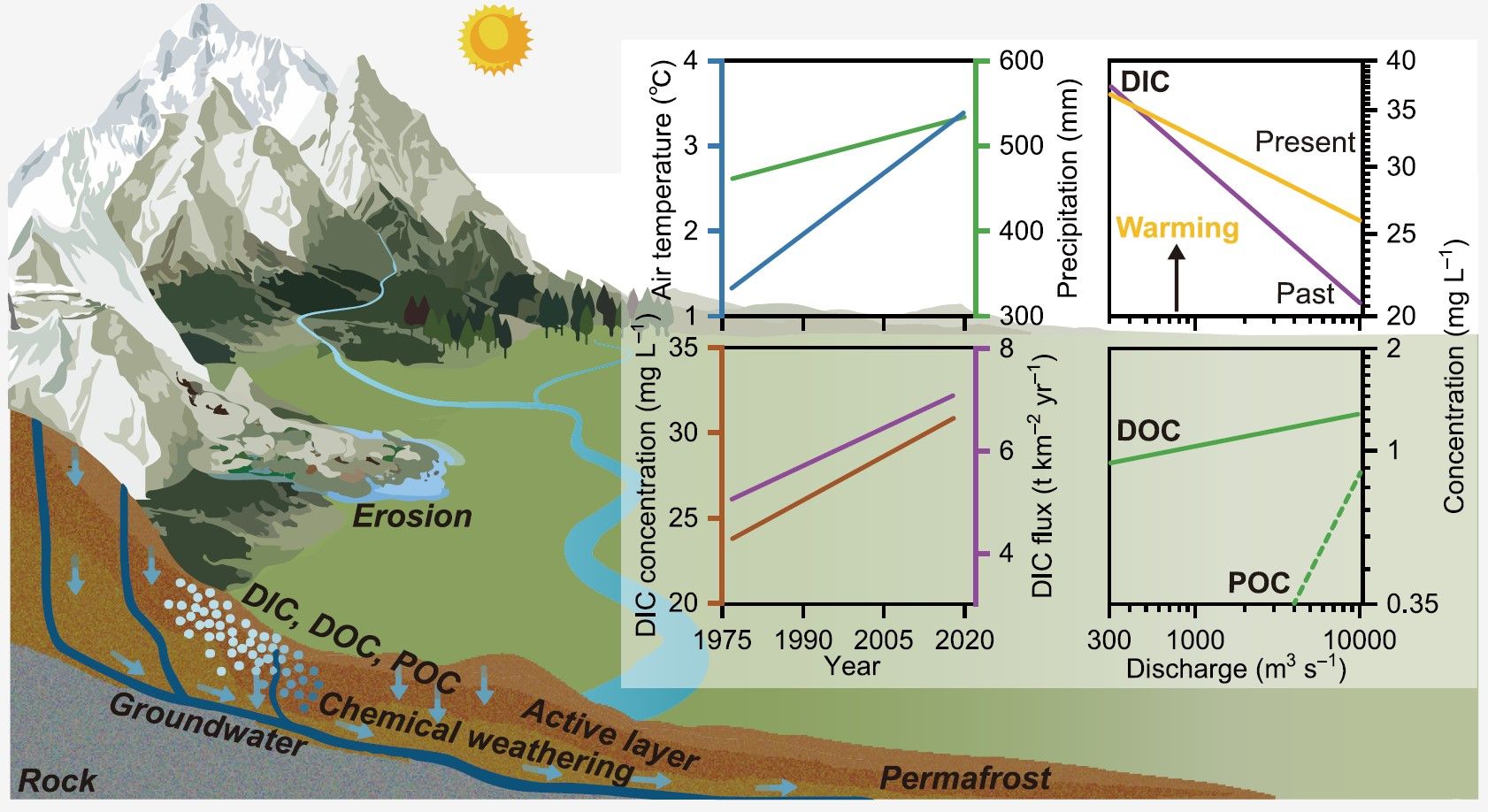Riverine carbon species, including dissolved inorganic and organic carbon (DIC and DOC) and particulate organic carbon (POC), constitute crucial components of the global carbon cycle connecting the land to the ocean. The production and export of riverine carbon depend on temperature and water flow, often driven by seasonal weather, long-term climate changes, and associated earth surface processes such as permafrost thaw. Understanding the interactive drivers and processes of carbon production and export is critical to constrain the role of anthropogenic climate change on riverine carbon fluxes.
The Arctic region has shown clear decadal increases in DIC and alkalinity fluxes across major rivers including the Mackenzie, Yenisei, and Ob Rivers in a warming climate. Outside the Arctic, high-elevation and mountainous regions experience the most rapid climate warming. Such regions potentially act as sentinel sites, offering early glimpses of climate change impacts on fluvial biogeochemistry. The Qinghai-Tibetan Plateau (QTP), referred to as the “Earth’s Third Pole” and “Asian Water Tower”, stands as the highest and most extensive orogenic plateau in the world. Over the past four decades, warming has elevated air temperature and moisture in the QTP, affecting local atmospheric, hydrological, and biogeochemical cycles. Despite a comprehensive knowledge of hydrologic responses to warming, the responses of fluvial biogeochemistry to warming remain poorly constrained in the QTP and in other high-elevation landscapes outside the Arctic.
In this study, we present a long-term dataset of dissolved inorganic carbon (DIC) and a more detailed, short-term dataset of DIC, δ13CDIC, and organic carbon from two major rivers of the Qinghai-Tibetan Plateau, the Jinsha River (JSR) and the Yalong River (YLR). In the higher-elevation JSR with ~51% continuous permafrost coverage, warming (>3°C) and increasing precipitation coincided with substantially increased DIC concentrations by 35% and fluxes by 110%. In the lower-elevation YLR with ~14% continuous permafrost, such increases did not occur despite comparable extent of warming. Riverine concentrations of dissolved and particulate organic carbon increased with discharge (mobilization) in both rivers. In the JSR, DIC concentrations transitioned from dilution (decreasing concentration with discharge) in earlier, colder years to chemostasis (relatively constant concentration) in later, warmer years. This changing pattern together with lighter δ13CDIC under high discharge suggests that permafrost thawing boosts DIC production and export via enhancing soil respiration and weathering. These findings reveal the predominant role of warming in altering carbon lateral export by escalating concentrations and fluxes and by modifying export patterns.

Graphical abstract
Citation: Xu, S., Li, S.-L. *, Bufe, A., Klaus, M., Zhong, J., Wen, H., Chen, S., Li, L., 2024. Escalating Carbon Export from High-Elevation Rivers in a Warming Climate. Environmental Science & Technology. 58 (16), 7032-7044. https://doi.org/10.1021/acs.est.3c06777.